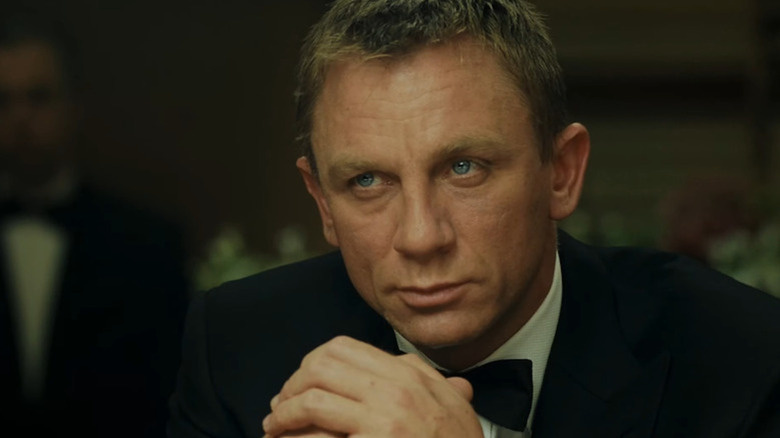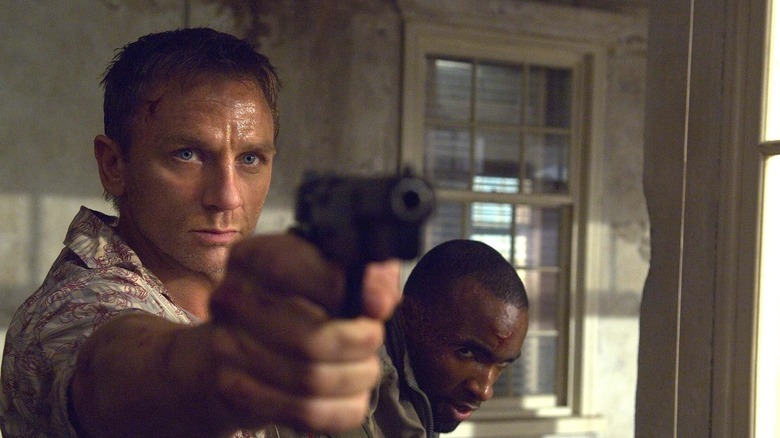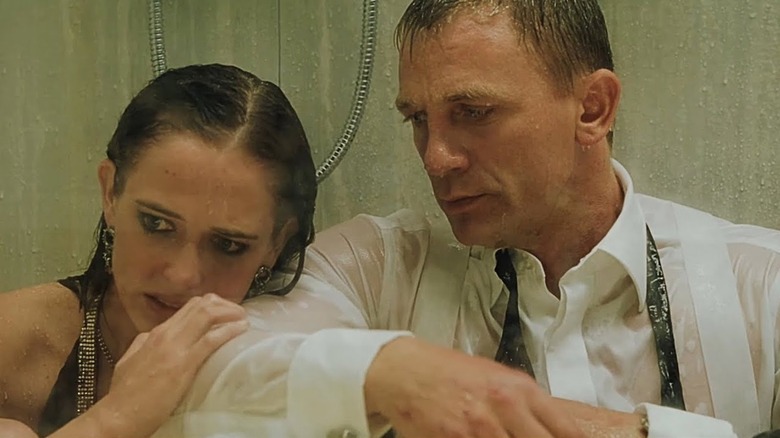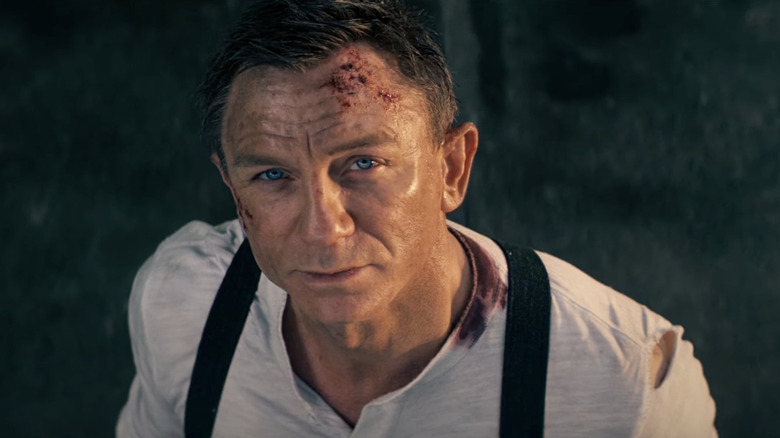James Bond's Producers Wanted To Cut Two Of Casino Royale's Defining Scenes
The world was a drastically different place when the James Bond film series kicked off in 1962 with "Dr. No." Gender roles were still set in stone. It was a man's world, one in which women were expected to keep a clean and orderly house while the breadwinner put in his forty hours a week. Should a woman seek employment outside of the home, it's because they were single (weird, especially after a certain age) and could type or file up a storm.
In movies, unmarried women tended to be tragic figures or femme fatales (when they weren't queens or goddesses). If they weren't desperate for a good man to make them whole, they were hellbent on compromising and destroying one. Or they were tools of wealthy, nefarious men, like the Bond girls. Beginning with Ursula Andress' Honey Ryder, the Bond girl was typically a femme fatale who helplessly fell for the British secret agent's rough charm (Connery's 007 wasn't above slapping a woman if he perceived her impertinent). They had ludicrously sexual names (still a miracle to me that "Goldfinger" got away with Pussy Galore in 1964), and, at best, just enough going on in the noggin to earn Bond's respect.
The exception in the 1960s Bond run was Countess Teresa ("Tracy") di Vicenzo in "On Her Majesty's Secret Service." The daughter of a European crime boss, Tracy is not a sassy piece of eye candy. Intellectually, she is Bond's equal. Emotionally, she's a mess, but understandably so — and her inner turmoil brings out Bond's insecurities. They had to wait for Connery to dip out of the franchise to attempt a character like Tracy (played with uncommon-for-the-series nuance by the great Diana Rigg), and, sadly, the film didn't stick because critics and audiences rejected neu-Bond George Lazenby.
So it was more of the sexist same for decades until 007's stewards stared irrelevance in the face and boldly rebooted with 2006's "Casino Royale." And even then, there were a couple of "Bond wouldn't do that" speed bumps.
A license to kill and an edict to treat women with a modicum of respect
In Edward Gross and Mark A. Altman's "Nobody Does It Better: The Complete, Uncensored, Unauthorized Oral History of James Bond," director Martin Campbell recalls the production of "Casino Royale" with great fondness. Producer Barbara Broccoli had been running the franchise since her father, Albert "Cubby" Broccoli, handed over the reins in 1995 prior to the release of "GoldenEye," and she was keen to make the character relevant for a new millennium. The series' gadget fetish had once again gotten out of control (Pierce Brosnan's Bond swan song, "Die Another Day," featured an invisible car), while Matt Damon's superspy Bourne movies were connecting with audiences on a visceral, bone-cracking level. Where did Bond fit in this gritty, post-9/11 landscape?
Campbell, who'd resuscitated Bond once before with "GoldenEye" (which arrived six years after the box-office disappointment of Timothy Dalton's final go-round in "License to Kill"), was thrilled that Broccoli and her producing partner Michael G. Wilson granted him the freedom to tinker with 007's image — especially with an actor of Daniel Craig's magnitude in the lead role. He was an acclaimed British stage actor who lacked the polish of his predecessors. His casting sent a message to audiences that Bond would not revert to his dame-bedding, wisecracking ways — at least, not without a good deal of muss.
And this is because the Bond of "Casino Royale" is not Bond yet. It's an origin story of sorts (based on the first book in Ian Fleming's series, which is not an origin story but an introduction), which gave Campbell and Craig a ton of leeway. Still, Broccoli and Wilson, mindful of their brand, registered objections from time to time.
James Bond in love
Craig's Bond isn't a psychopath, but, for the first chunk of "Casino Royale," he comes off as a remorseless, relentless killer who has more in common with The Terminator than Jason Bourne. After the parkour-ing fades away, we get a measure of Bond as a capable, cold-around-the-heart spy. He's just the man to stoneface his way through a Texas hold 'em poker tournament as a means of bankrupting terrorist financier Le Chiffre (our Mads Mikkelsen).
But Bond will use every advantage to ensure his victory, and he spies his associate, Vesper Lynd (Eva Green), as an alluring asset. Campbell dug this idea, but he also saw Lynd, much like Rigg's Tracy, as Bond's equal. This bugged Broccoli, particularly in the scene where Bond and Lynd get gussied up for the tournament. As Campbell told Gross and Altman:
"Bond, full of attitude, comes in and hangs up her dress and says, 'I want you to wear this, because I want the players looking at you and not at their cards. A distracting technique.' It was chauvinist as hell. Then he goes back in and, my God, he sees this beautiful suit laid out. I remember Barbara saying, 'You can't have that. You can't have that. Bond has his own suit.' I said, 'But he's not Bond yet.'"
RIP James Bond 1962 - 2021
Broccoli wisely relented, and, according to Campbell, only raised one other significant objection, this in response to the moment when Bond breaks into M's apartment and she upbraids him ("One more word and I'll have you shot"). This scene sets a refreshingly matriarchal tone for the series (Bond must always answer to a sensible, incredibly capable woman), and pays off beautifully when Judi Dench's M is killed in "Skyfall."
Craig's Bond run wasn't without its stumbles (namely "Quantum of Solace" and "Spectre"), but he did strip out the series' sexism and cleared a landing strip for what I believe should be the franchise's finale in "No Time to Die." If James Bond must return, the next film should be shorn of the obligatory opening graphics and John Barry's iconic music cues. Start from scratch and pay no homage. Make your own Bond.



